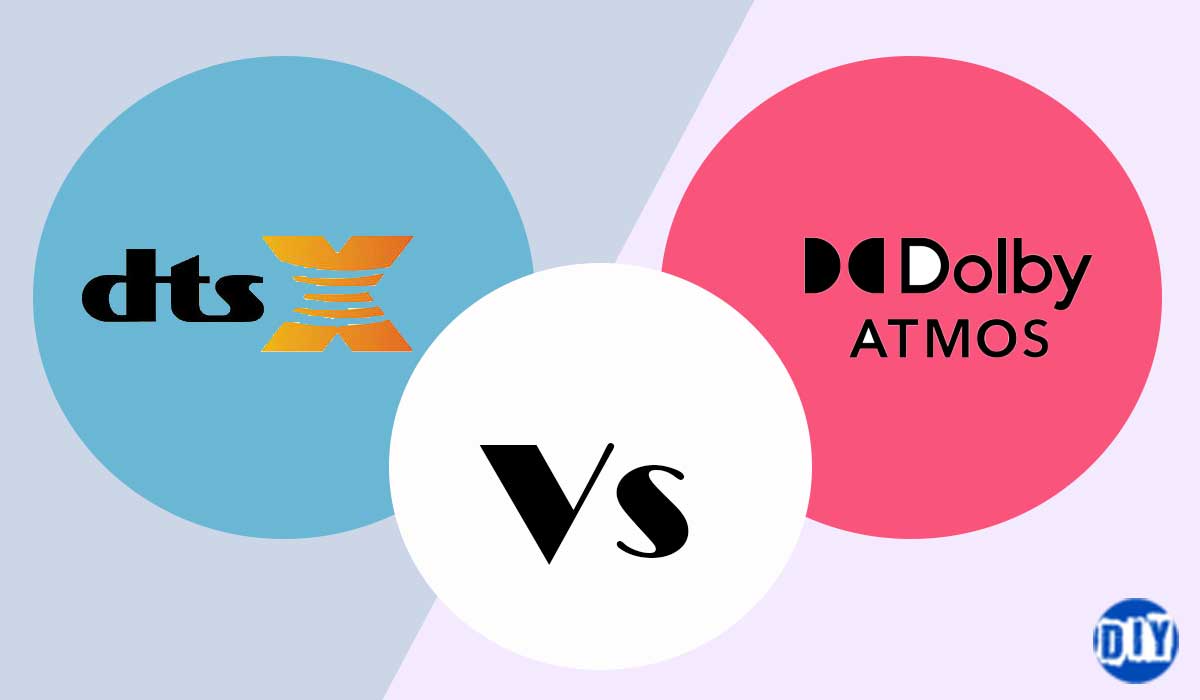Dolby Atmos and DTS-X are two advanced and popular object-based audio formats that are able to place sound around and above the listening position.
Dolby Atmos is encoded using the Dolby Digital Plus (lossy Atmos) or Dolby TrueHD (lossless Atmos) compression scheme. Atmos adds the element of height that allows audio to pan up and down and can support up to 128 simultaneous audio objects that can be represented by up to 35 speaker positions. DTS-X can support up to 224 audio objects and can be played back on up to 32 speaker positions. DTS-X is layered upon the DTS-HD MA or DTS-UHD audio coding systems.
Audio objects allow you to interact with audio elements in the sound program for higher precision putting you right in the action. Objects adapt to the speaker system as they are not limited by a specific speaker layout.
While it would be natural to compare these formats, this article is meant to give you a basic understanding of each object-based format and what you can expect from each other than giving an absolute winner.
Let’s roll on.
Dolby Atmos
Dolby Atmos is an adaptable and scalable object-based format that accurately positions and moves sound elements in 3-dimensional space for more immersion. It introduces the element of height to place sounds above the listener. It is used in movies, games, TV shows, VR headsets, and so on.
Atmos content is distributed using the Dolby TrueHD (lossless Atmos) or Dolby Digital Plus (lossy Atmos) audio encoding system for download or streaming. An Atmos decoder is required to unpack Atmos data.
Atmos speakers can be played back on different speaker configurations for the best rendering possible of the audio objects. Atmos objects can be placed anywhere in the room independent of the bed surround speakers. The placement of the objects is specified by spatial coordinates and is informed by the number and placement of your speakers.
However, to properly play back Atmos content, you will need overhead, up-firing, or in-ceiling speakers in your multi-channel system to place objects above you. This can be a 5.1.2, 7.1.4 system, and so on. Atmos content can be played back on up to 35 speaker positions (24 beds, 10 heights, and subwoofer).
Alternatively, Dolby Atmos Height Virtualization which is a processing mode can a virtual height effects without overhead speakers on a 2.1, 5.1, or 7.1 speaker system. This can be on a soundbar or any processor that features height virtualization such as headphones.
Dolby Surround Atmos up-mixer also intelligently to up-mix stereo or 5.1 or 7.1 soundtracks for playback on an Atmos system without Atmos content.
DTS-X
DTS-X is another object-based sound format created by DTS (Digital Theater Systems) as a direct competitor to Dolby Atmos. DTS-X content is layered on the DTS-HD master audio or DTS-UHD coding system to ensure backward compatibility with non-DTS-X decoders.
But unlike Atmos, DTS-X does has no overhead speaker requirements or specific speaker configuration to create a lifelike sound hemisphere.
While it is useful to have overhead speakers for DTS-X, they are not required as DTS-X is flexible and will adapt to your speaker placement.
Sound objects are not bound by channels and can adapt to any speaker layout from the TV speakers to multi-channel speaker layouts with up to 11.1 speaker positions. The audio objects can be placed in front, to your sides, behind, and above you using metadata provided to the DTS-X decoder. The metadata specifies where the objects should be placed and how they move in 3D space.
To enjoy DTS-X, you will need DTS-X material and a DTS-X decoder. If a DTS-X decoder is not available, the DTS-HD MA or DTS-digital core is decoded instead.
DTS-Pro is a later iteration of DTS-X announced in 2020. Any device with a DTS-X pro decoder upgrades the playback for up to 32 speakers positions including overhead speakers.
Since not all movies feature a DTS-X track, a Neural-X up-mixer is offered to up-mix standard DTS 5.1, PCM or mono content to all speakers for up to 32 speaker positions. The higher the number of channels provided to the up-mixer, the better the playback accuracy will be. Neural-X is similar to the Dolby Surround up-mixer.
Additionally, DTS virtual-X processing creates a virtual DTS-X sound hemisphere with any speaker system. This can be a 2.0, 3.1, 5.1, or 7.1 speaker configuration including soundbars and TV speakers. It creates phantom surround sound and height effects. DTS Virtual-X is meant for those that can’t afford a surround sound system.
DTS Headphone:X is another processing system that attempts to create spatial audio in a set of headphones mimicking a DTS-X system. It is able to render sound around and above you using headphone drivers. This system can work with any set of cans whether they are stereo or surround sound headphones.
To Wrap up
Now that you have a basic understanding of these two object-based powerhouses, you can try each out to determine what works for you depending on your personal preference as the audio quality is purely subjective.
Although these formats are more similar than they are different, they are based on different technologies and are encoded differently. Their implementation by the audio engineer and AV equipment from different manufacturers will also differ.


